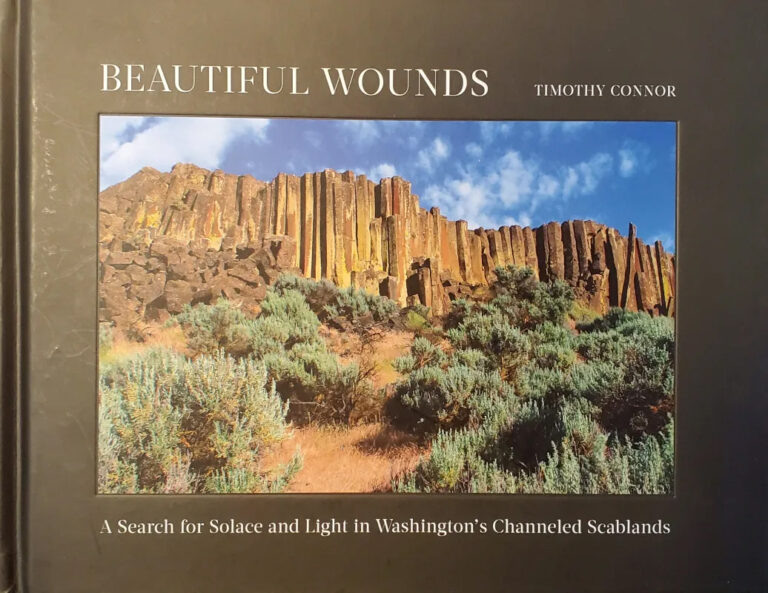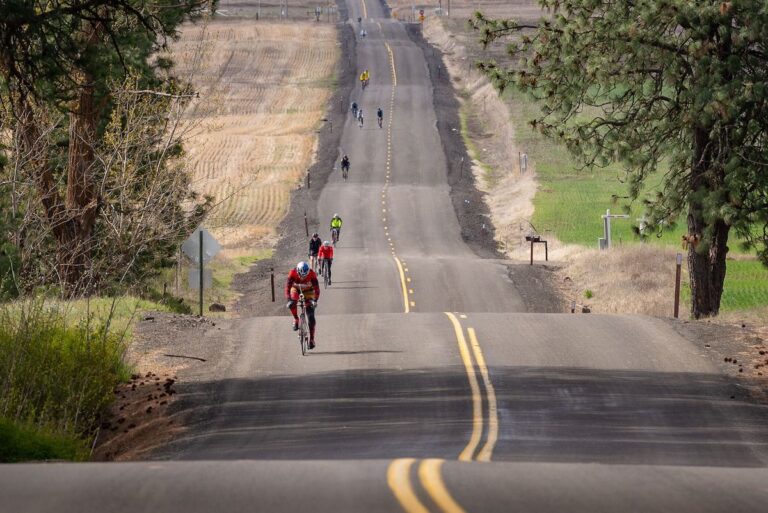Come Spring, when the landscape unfolds in joyless, tattered, soggy and down-trodden greys and browns, I search for the shine of soft, silvery pussy willows. Usually, I have no luck.
Last year I received a beautiful bouquet of plump pussy willows, male flower catkins, encased in soft grey “fur.” Soon, the woody stems were sprouting rootlets! My saplings thrived. By early fall, I could no longer postpone admitting that I didn’t have room for even one willow in my yard. What to do?
I walk regularly in People’s Park, a peninsula of land between the converging Latah (Hangman) Creek and the Spokane River. This floodplain has been used by people for many thousands of years. Today, it is lovely and feral, with braiding trails through scattered ponderosa, wild rose, serviceberry, river willow, scraggly fruit trees and much else. Why not put a couple of pussy willows along the creek?
A friend and I planted two tiny whips in the sand alongside the river willow. Excursions over the winter revealed sturdy plants with unique red buds. The gloom of winter also revealed my uneasy conscience: what if I am unleashing another plague of rapacious invaders, like starlings, knapweed, or zebra mussels?
I sought out a knowledgeable friend with the Native Plant Society and confessed my deed. He was unwilling to condemn me, but equally unwilling to absolve. What if my vigorous pussy willows thrive and interbreed with the local willows? What if I have tampered with the phenology of my beloved peninsula and when the first wild pollinators show up, the precious golden froth of pollen upon which they depend is already spent or still locked up in silvery fuzz?
My guilt quickly gave way to curiosity: What’s phenology anyway?
“Phenology is the study of timing in nature. When the ice melts. When flowers bloom. When aquatic insects emerge,” explains EWU Biology Professor Ross Black. The word literally means the science of appearances.

Aldo Leopold, hallowed naturalist and writer, for decades lovingly recorded the first date that buds opened, leaves popped, insects hummed and sandhill crane flew overhead near his rural Wisconsin “shack.” “Many of the events of the annual cycle recur year after year in a regular order,” Leopold notes. “A year-to-year record of this order is a record of the rates at which solar energy flows to and through living things. They are the arteries of the land. By tracing their response to the sun, phenology may eventually shed some light on that ultimate enigma, the land’s inner workings.” (“A Phenological Record for Sauk and Dane Counties, Wisconsin,” 1935-1945.)
Leopold’s daughter, Nina, says “Phenology is a way of seeing the Earth. The fact that you keep records all of a sudden changes the way you see the natural systems around you. If you didn’t have it written down, you wouldn’t be able to see it.”
Aldo Leopold’s decades of note taking in the 1930s and 40s have been extended by his children and others. These recorded observations are carried forward by the National Phenology Network and others. One third of the events Leopold noted 70 years ago are occurring two to three weeks earlier now.
Being challenged at note taking, I was happy to find Project Budburst, a site offering guidance on how to record phenologic events in a consistent way so that scientists can use the data to learn more about the responsiveness of individual plant species to changes in climate (Budburst.org). With this online resource, we can keep track of our notes and everyone else’s too. We can be citizen scientists, adding our own geography and data points, and be an important part of the big picture unfolding around us.
And what of my transplants along Latah Creek? A forest ecologist acquaintance noted that People’s Park already hosts significant non-native species. He thought that if my pussy willows can make it – they would provide “shade and structure” and generally enhance the habitat.
On the first sunny day after weeks of rain and snowmelt, Latah Creek ran high and muddy, backed up as it flowed out along the edge of the bigger, colder, fast flowing Spokane River. I looked for my willows, but couldn’t see them. I will have to wait until the creek subsides to know if they survived. I won’t dig them up if I find them, but I will definitely hold off on more transplanting and re-focus my zeal to pulling knapweed. Better to shift some plant love to phenology and hope for the expanding delight and insight promised by Nina Leopold. //












